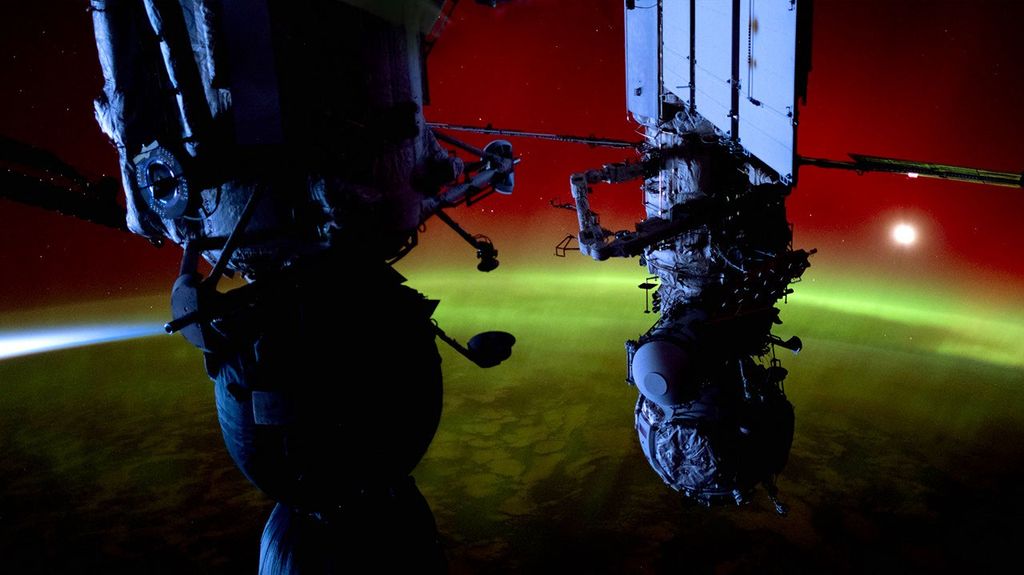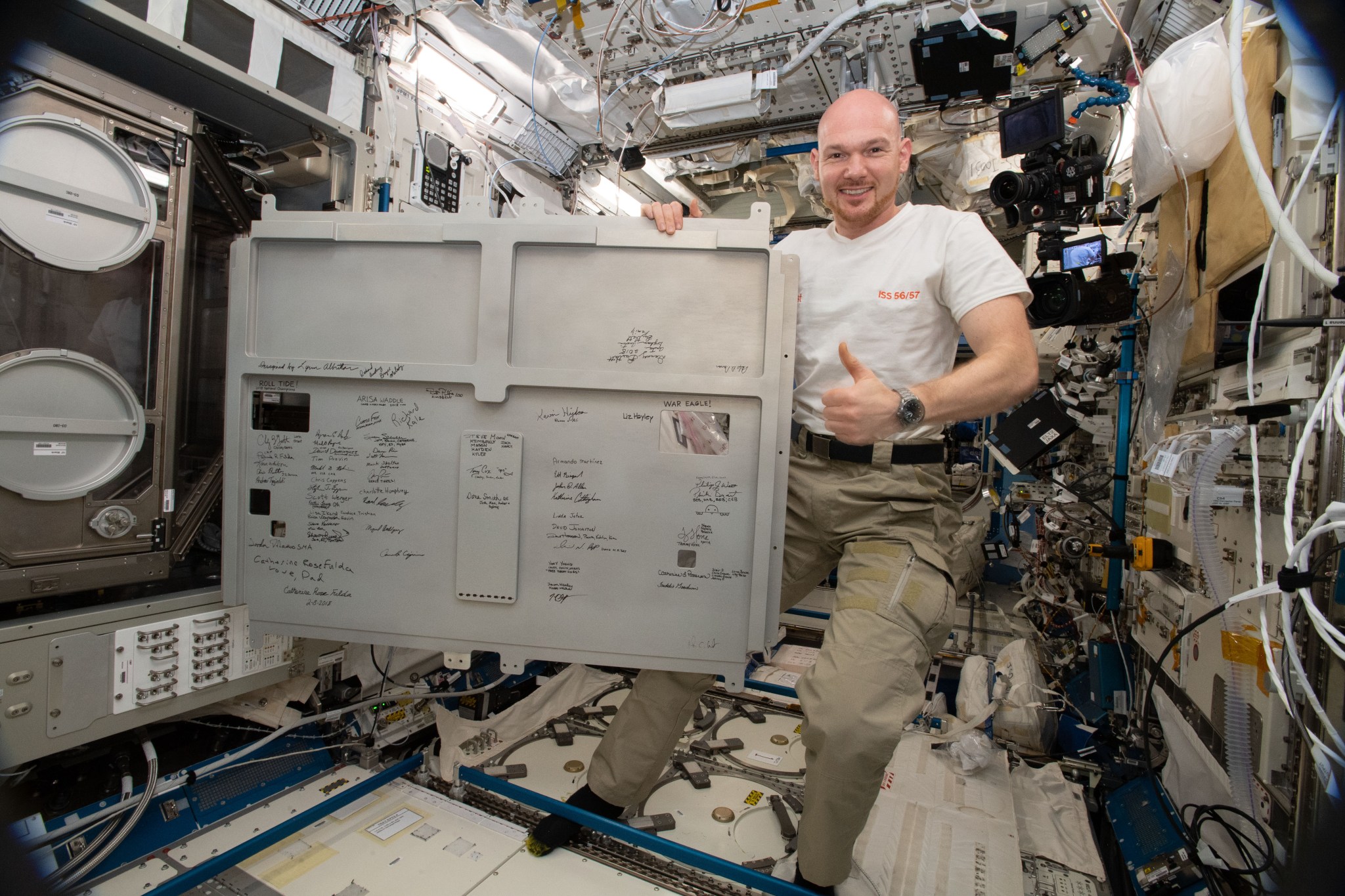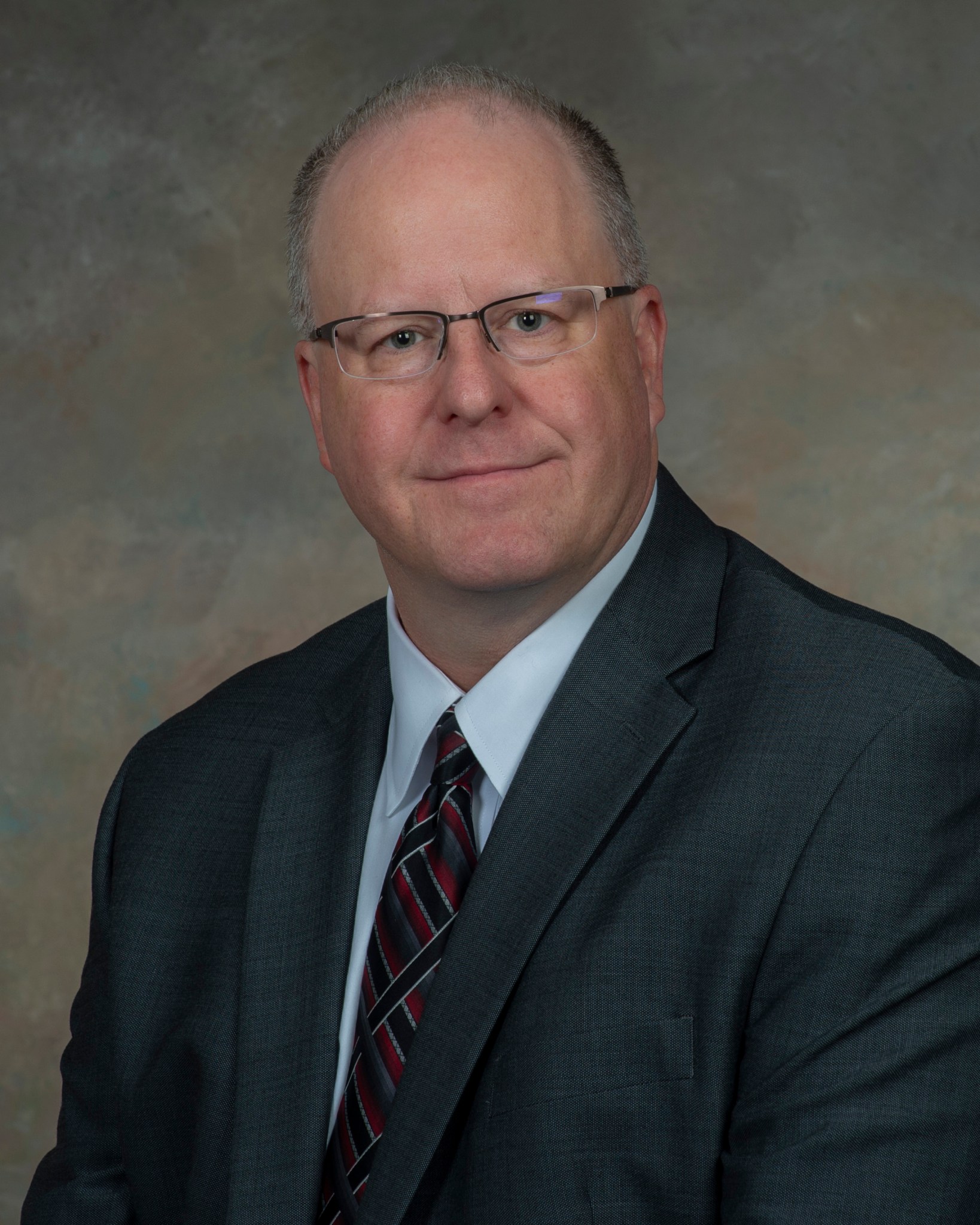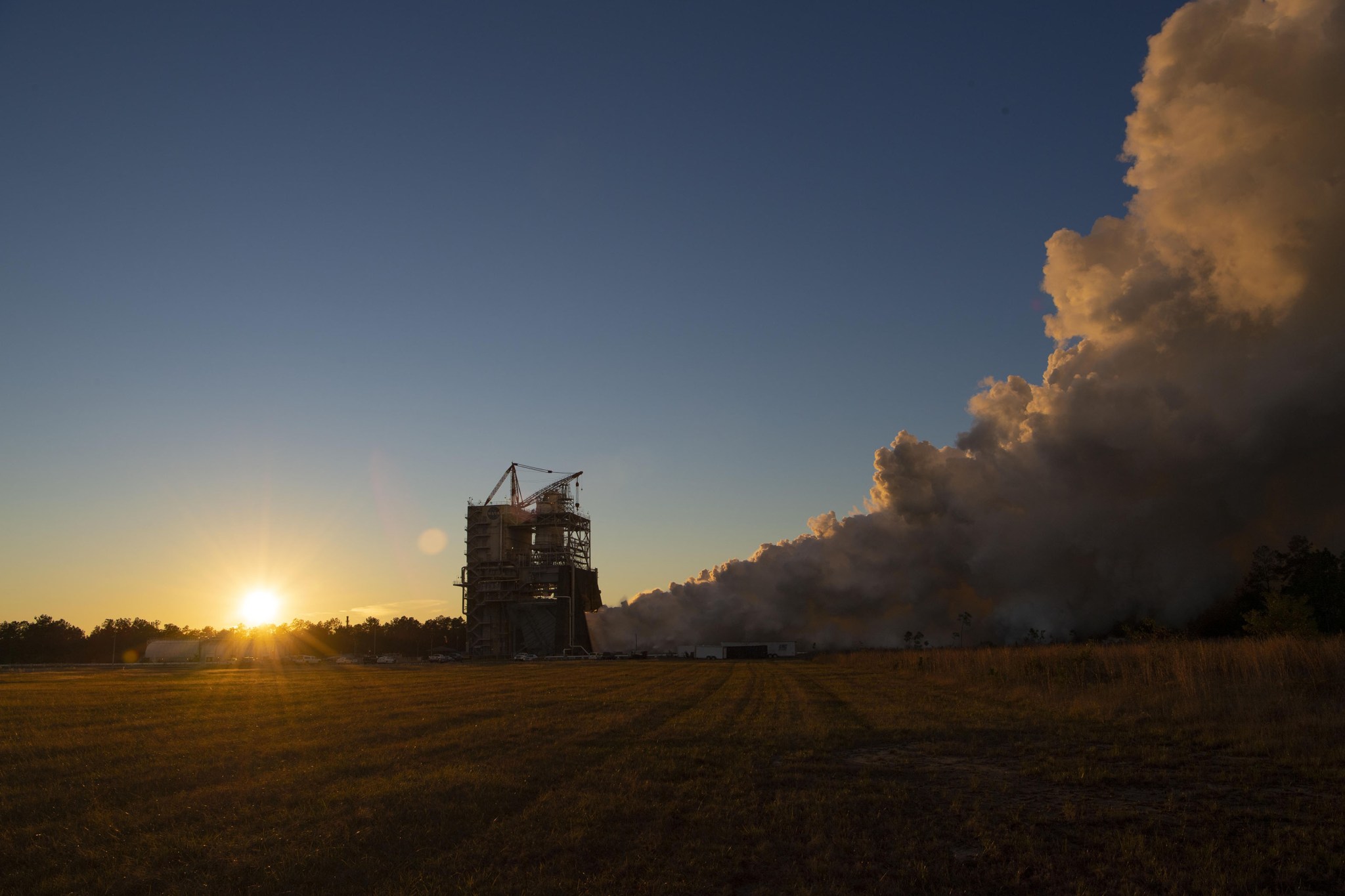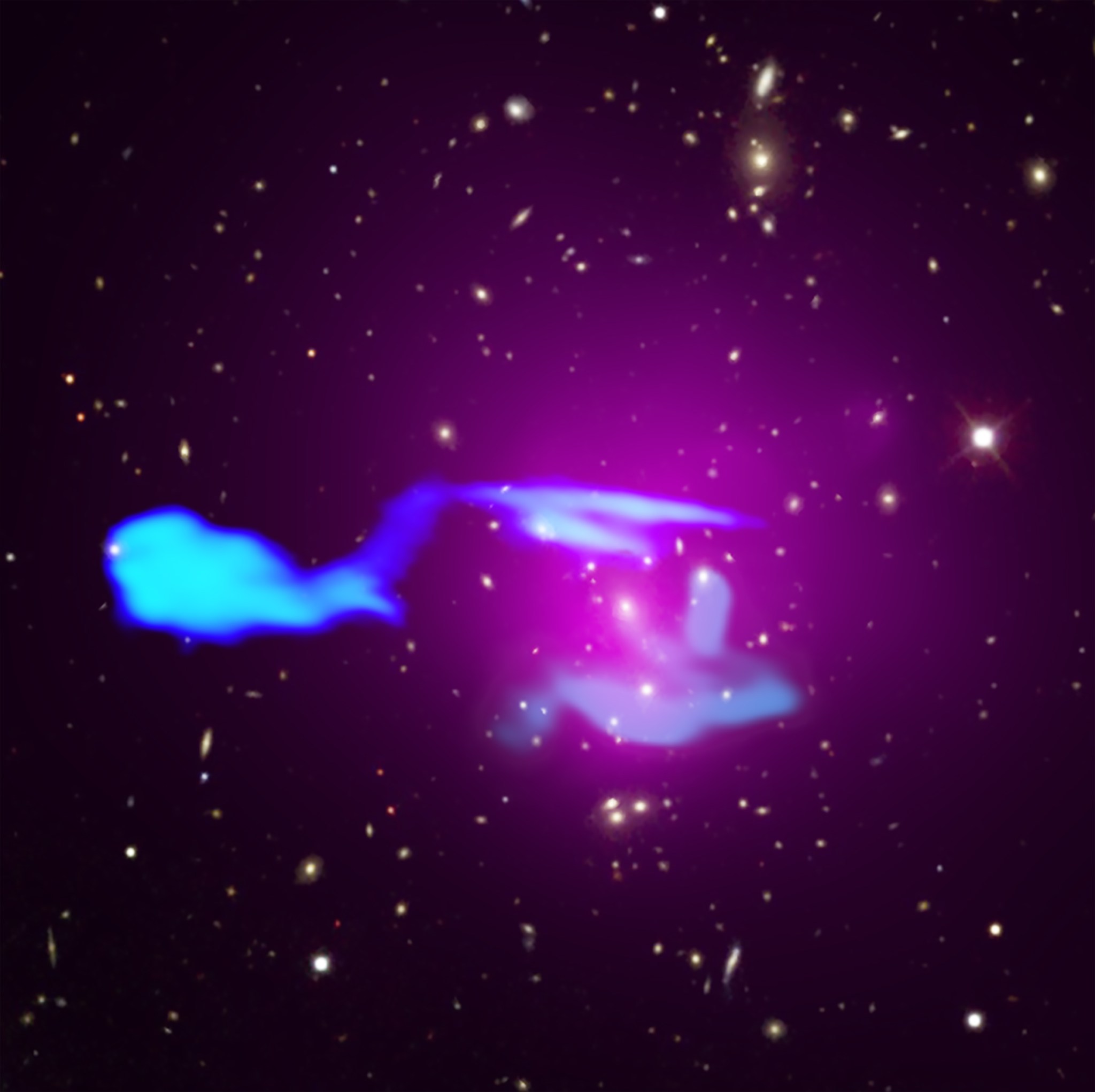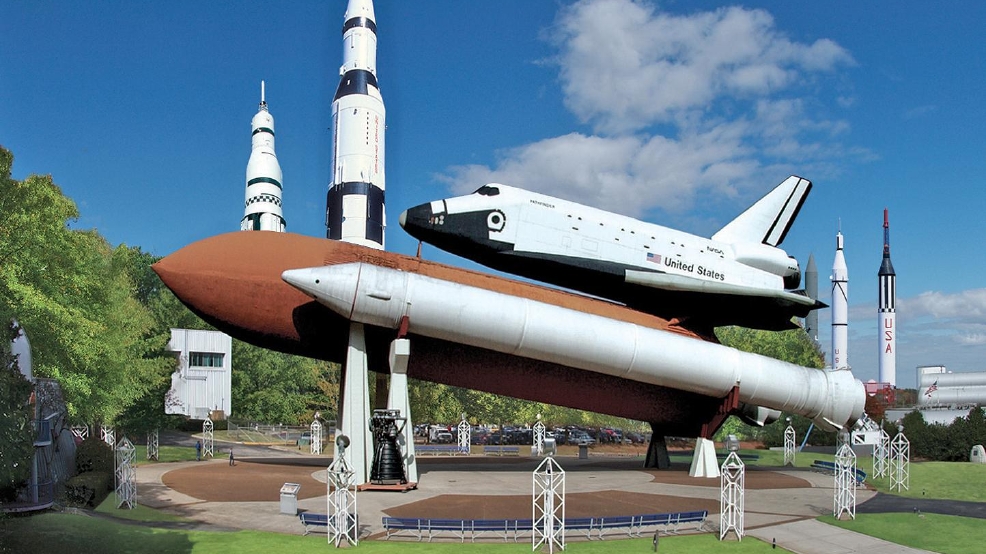In This Week’s Star
- Life Sciences Glovebox Commissioned on Space Station, Set to Enable Biological, Physiological Studies
- Combination 3D Printer will Recycle Plastic in Space
- Jason Detko Named Marshall’s Director of Procurement
- Marshall Team Members Invited to Live ‘Watch Party’ for Nov. 26 Mars Landing
- NASA Ushers in Autumn with Powerful RS-25 Engine Test for SLS
- Abell 1033: To Boldly Go into Colliding Galaxy Clusters
- U.S. Space & Rocket Center Seeking Space-themed Artifacts for New Exhibit
- This Week in NASA History: NASA Approved the F-1 Engine Contract – Nov. 18, 1966
Life Sciences Glovebox Commissioned on Space Station, Set to Enable Biological, Physiological Studies
By Rick Smith
Newly installed on the International Space Station, NASA’s Life Sciences Glovebox experiment facility was officially commissioned Nov. 16.
Managed for the agency by NASA’s Marshall Space Flight Center, the glovebox will enable a host of automated and crew-assisted biological and physiological experiments, including new studies of microgravity’s long-term impact on the human body.
“Our team could not be more thrilled to have the Life Sciences Glovebox installed and operational on the International Space Station,” said Susan Spencer, glovebox deputy project manager at Marshall. “This effort has been a truly beneficial partnership between NASA and its partners — and the really exciting work’s just beginning.”
The glovebox arrived at the station Sept. 27 aboard a Japan Aerospace Exploration Agency cargo resupply vehicle. The Marshall glovebox team worked around the clock in October, partnering with Japan Aerospace Exploration Agency personnel and European Space Agency astronaut Alexander Gerst, station commander for Expedition 57, to install and integrate the new experiment facility.
To complete that final step, Gerst installed the operating laptop, power and data cables and filter banks, enabling ground operators to log in and power up the glovebox for the first time on orbit, Spencer said. Engineers ran test scripts to check all work volume functions and verify reception of recorded data from the experiment facility.
“And with all that accomplished, we have the official green light to begin payload operations,” she said.
The Marshall glovebox team continues to work to deliver critical spares and a second power control module, expected to be launched to the station in mid-2019.
The glovebox’s inaugural science experiment, to begin in late December, will be “Rodent Research-8,” a study of the physiology of young and old mice flown in space, with additional Earth-based studies for comparison. It is designed to deepen our understanding of aging-related immune, bone and muscle disease processes, potentially leading researchers to new therapies for use in space and on Earth.
Led by principal investigator Michael Roberts of the Center for the Advancement of Science in Space in Melbourne, Florida, the experiment was developed in partnership with industry firm Taconic Biosciences of Rensselaer, New York.
Learn more about the work of the Life Sciences Glovebox in this NASA ScienceCast blog.
Smith, an ASRC Federal/Analytical Services employee, supports the Office of Strategic Analysis & Communications.
Combination 3D Printer will Recycle Plastic in Space
The first integrated 3D printer and recycler is part of the cargo that was launched to the International Space Station on Northrop Grumman’s Cygnus spacecraft’s 10th commercial resupply services mission.
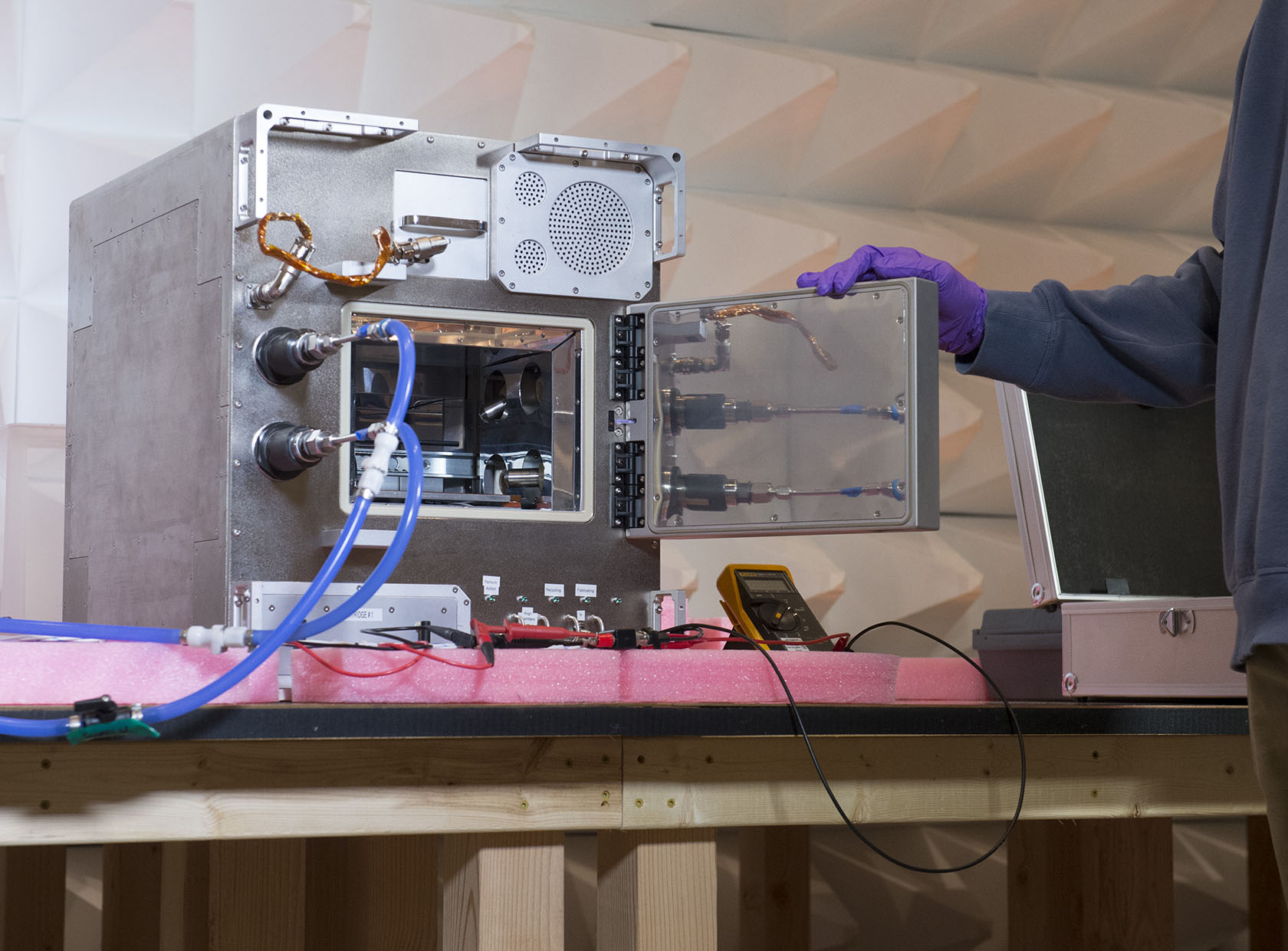
This technology could prove useful for future exploration missions to the Moon and Mars. NASA awarded a Small Business Innovation Research contract to Tethers Unlimited Inc. of Seattle to build Refabricator. The unit completed final flight certification testing at NASA’s Marshall Space Flight Center in Huntsville, Alabama. Almost all operations will be controlled remotely from Marshall’s Payload Operations Integration Center – mission control for science on the space station – and Tethers Unlimited Inc.
Refabricator is among several tons of cargo, including crew supplies and science experiments, that launched on Northrop Grumman’s Cygnus spacecraft on an Antares rocket Nov. 17 at 4:01 a.m. from NASA’s Wallops Flight Facility on Virginia’s Eastern Shore.
For more on Refabricator, visit: https://www.nasa.gov/mission_pages/centers/marshall/images/refabricator.html.
For Northrop Grumman commercial resupply mission updates, visit: https://www.nasa.gov/northropgrumman Credits: NASA/Emmett Given
The machine, known as Refabricator, will demonstrate the capability to turn waste plastic and previously 3D printed parts into high-quality 3D printer filament, or 3D printing “ink,” to create new tools and materials. The demonstration will use control plastic recycled multiple times to create parts that will be tested for quality back on Earth.
This technology could prove useful for future exploration missions to the Moon and Mars. NASA awarded a Small Business Innovation Research contract to Tethers Unlimited Inc. of Seattle to build Refabricator. The unit completed final flight certification testing at NASA’s Marshall Space Flight Center. Almost all operations will be controlled remotely from Marshall’s Payload Operations Integration Center — mission control for science on the space station — and Tethers Unlimited Inc.
Refabricator is among several tons of cargo, including crew supplies and science experiments, that launched on Northrop Grumman’s Cygnus spacecraft on an Antares rocket Nov. 17 from NASA’s Wallops Flight Facility.
Jason Detko Named Marshall’s Director of Procurement
Jason Detko has been appointed to the Senior Executive Service position of director of the Office of Procurement at NASA’s Marshall Space Flight Center. The Senior Executive Service is the personnel system covering top managerial positions in federal agencies.
In his new position, Detko will plan and direct the execution of all Marshall procurements with responsibility for a range of multi-program and institutional activities, such as source selections, sole source procurements, contract negotiation and administration, construction of facilities, contract closeout and termination, and activities that include administration of both small and minority business programs, contract reviews, cost analysis and grants.
“With over two decades of government procurement expertise, Jason is well prepared for his new position,” Marshall Director Jody Singer said. “His leadership skills and experience bring an abundance of knowledge to our team and we’re glad to have him continue his career in Huntsville at Marshall Space Flight Center.”
Detko previously served as director of Contracting Operations for Headquarters, Army Contracting Command, Redstone Arsenal, where he provided guidance on contract policy, e-commerce and business analytics, management assessment and field support to the command’s subordinate units. During this assignment, he was interim executive director for Services Acquisitions under the deputy assistant secretary of the Army for Procurement. He also was deputy director of Contracting Operations and chief of the Execution and Systems Contracting Support Division, and policy chief with the Army Contracting Command.
Prior to his positions with the Army Contracting Command, Detko was chief of the Business Operations Branch at the Army Corps of Engineers Engineering and Support Center in Huntsville. He was director of contracting for the Miami Regional Contracting Office, a component of the Expeditionary Contracting Command. He served on staff at Headquarters, Army Materiel Command and Headquarters, Air Force Materiel Command, and was a contracting officer and team leader at Buckley Air Force Base in Aurora, Colorado.
In 1992, Detko began his government career as an active duty member of the U.S. Air Force, and later continued with both the Air Force and Army as a civil servant.
Detko earned his bachelor’s degree in business administration from Wayland Baptist University in Plainview, Texas, and his master’s degree, also in business administration, from American Graduate University in Covina, California. He holds Defense Acquisition Workforce Improvement Act Level III certification in contracting, has previously held an unlimited Contracting Officer’s Warrant and is a member of the Army Acquisition Corps. He has been awarded the Air Force Commendation Medal, the Air Force Achievement Medal, the Army Commander’s Award for Civilian Service and the Army Superior Civilian Service Award.
Detko’s new assignment became effective Nov. 19.
Marshall Team Members Invited to Live ‘Watch Party’ for Nov. 26 Mars Landing
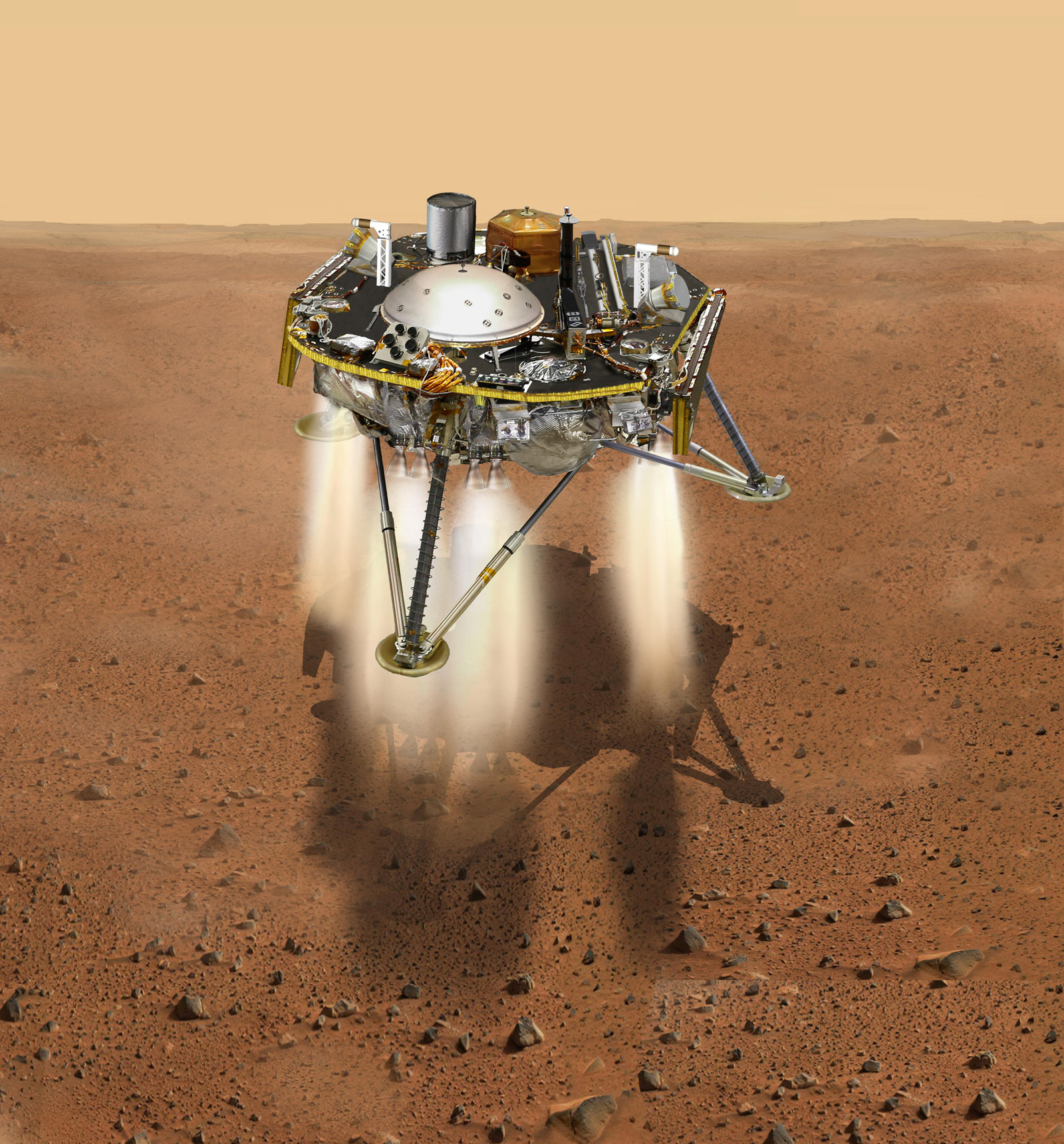
NASA’s Jet Propulsion Laboratory, a division of Caltech in Pasadena, California, manages the InSight Project for NASA’s Science Mission Directorate, Washington. Lockheed Martin Space, Denver, Colorado built the spacecraft. InSight is part of NASA’s Discovery Program, which is managed by NASA’s Marshall Space Flight Center in Huntsville, Alabama.
For more information about the mission, go to https://mars.nasa.gov/insight. Credits: NASA/JPL-Caltech
NASA’s Mars Interior Exploration using Seismic Investigations, Geodesy and Heat Transport (InSight) lander is set to touch down on the Red Planet at about 2 p.m. CST Nov. 26.
From noon-5 p.m., the Planetary Missions Program Office at NASA’s Marshall Space Flight Center, in partnership with the U.S. Space & Rocket Center, is hosting a live InSight landing party at the Davidson Center for Space Exploration.
Marshall team members are invited to join the celebration and watch NASA’s live coverage of the historic Mars landing live on the big screens in the Davidson Center’s National Geographic Theater and under the historic Saturn V moon rocket.
Renee Weber, acting chief scientist at Marshall and an InSight science team member, will lead a presentation on the science behind the mission at 12:30 p.m. in the National Geographic Theater.
The family friendly event will also include exhibits and hands-on activities highlighting Mars and solar system exploration. A complete list of activities and schedule of events is available on the rocket center’s website.
Launched on May 5, InSight is the first spacecraft built to study Mars’ deep interior. The landing will kick off a two-year mission that will help scientists understand the formation of the Red Planet and all rocky planets, including Earth.
The InSight mission is part of NASA’s Discovery Program, managed by the Planetary Missions Program Office at Marshall.
NASA Ushers in Autumn with Powerful RS-25 Engine Test for SLS
NASA ushered in the Gulf Coast fall season with force Nov. 15, conducting a full-power, full-duration 650-second RS-25 engine test on the A-1 Test Stand at Stennis Space Center, where the agency is testing engines to help power its new Space Launch System rocket.
Operators fired development engine No. 0525 to a 113 percent thrust level for 60 seconds during the test, marking only the second time they have achieved the highest RS-25 power level. Engineers first fired development engine No. 0528 to that level during a February test at Stennis.
Four RS-25 engines will help power SLS at launch, supplying a combined 2 million pounds of thrust and working in conjunction with a pair of solid rocket boosters to provide more than 8 million pounds of thrust. RS-25 engines for initial missions are former space shuttle engines, designed to provide a specific power level, categorized as 100 percent thrust.
Through the space shuttle years, the engines were modernized to provide additional thrust up to 109 percent of the original level. For SLS, they have been modified again to provide up to 111 percent of original thrust, with the 113 percent hot fires at Stennis allowing operators to test a margin of safety.
The test also marked the third time an RS-25 engine has been fired for the longer duration. Typical tests run 500 seconds, the amount of time — 8 minutes, 20 seconds — the engine must fire to power the rocket from launch into space. The 650-second duration represents the time three RS-25 engines would have to fire to burn up propellant and power the rocket into orbit, if the fourth shut down early during an SLS launch.
The longer time also allows operators to schedule and meet more performance objectives during a test. This hot fire was also the sixth on this engine in a current series of acceptance tests for RS-25 engine controllers that will be used on future SLS flights. The new controller is a key component of recent engine modifications. It operates as the brain of the engine, helping it to communicate with the rocket and controlling engine operation and internal health diagnostics.
The hot fire also featured continued testing of two innovative engine components — a 3D-printed pogo accumulator to dampen pressure oscillations that can cause flight instability and a main combustion chamber fabricated using a new hot isostatic pressing bonding technique that saves considerable time and money.
RS-25 tests continue NASA’s progress toward Exploration Mission-1, where the new rocket will send an Orion spacecraft around the Moon and back to test critical capabilities needed to carry astronauts farther in space than ever before, and eventually to Mars. On Exploration Mission-2, SLS will carry astronauts aboard Orion on a return to deep space. Prior to those flights, NASA will test the SLS core stage on the B-2 Test Stand at Stennis. RS-25 tests at Stennis are conducted by a combined team of NASA, Aerojet Rocketdyne and Syncom Space Services operators. Aerojet Rocketdyne is the RS-25 prime contractor. Syncom Space Services is the prime contractor for Stennis facilities and operations.
Abell 1033: To Boldly Go into Colliding Galaxy Clusters
Hidden in a distant galaxy cluster collision are wisps of gas resembling the starship Enterprise — an iconic spaceship from the “Star Trek” franchise. This superheated gas is invisible to optical telescopes, but shines brightly in X-rays, so an X-ray telescope like NASA’s Chandra X-ray Observatory is required to study it. A new composite image of the galaxy cluster — named Abell 1033 — including X-rays from Chandra (purple) and radio emission from the Low-Frequency Array network in the Netherlands (blue), does just that. Using X-ray and radio data, scientists have determined that Abell 1033 is actually two galaxy clusters in the process of colliding. NASA’s Marshall Space Flight Center manages the Chandra program for NASA’s Science Mission Directorate. (NASA/CXC)
U.S. Space & Rocket Center Seeking Space-themed Artifacts for New Exhibit
The U.S. Space & Rocket Center is seeking donations or loans of space-themed artifacts and memorabilia for a spring 2019 exhibit intended to capture the spirit of space exploration and celebrate the 50th anniversary of the 1969 Moon landing of Apollo 11.
Team members at NASA’s Marshall Space Flight Center and members of the Huntsville community are invited to submit items which illustrate America’s fascination with space, rockets and exploration of other worlds. Items sought include artwork, toys, games, clothing and accessories, pottery, glassware, newspapers, magazines, comic books, rare or first-edition books, and film, television or audio recordings.
Organizers emphasized they do not need publicly issued commemorative items celebrating missions or event anniversaries, still photography, space hardware, technical documentation, or business and personal correspondences.
Potential donors are asked to upload a photo with description of each item for consideration no later than Nov. 23. If selected for consideration, donors will receive an invitation to bring their items for a special collection-day event. Only items specifically identified during the review process will be accepted during the collection.
More information about contributing artifacts and memorabilia can be found here.
This Week in NASA History: NASA Approved the F-1 Engine Contract – Nov. 18, 1966
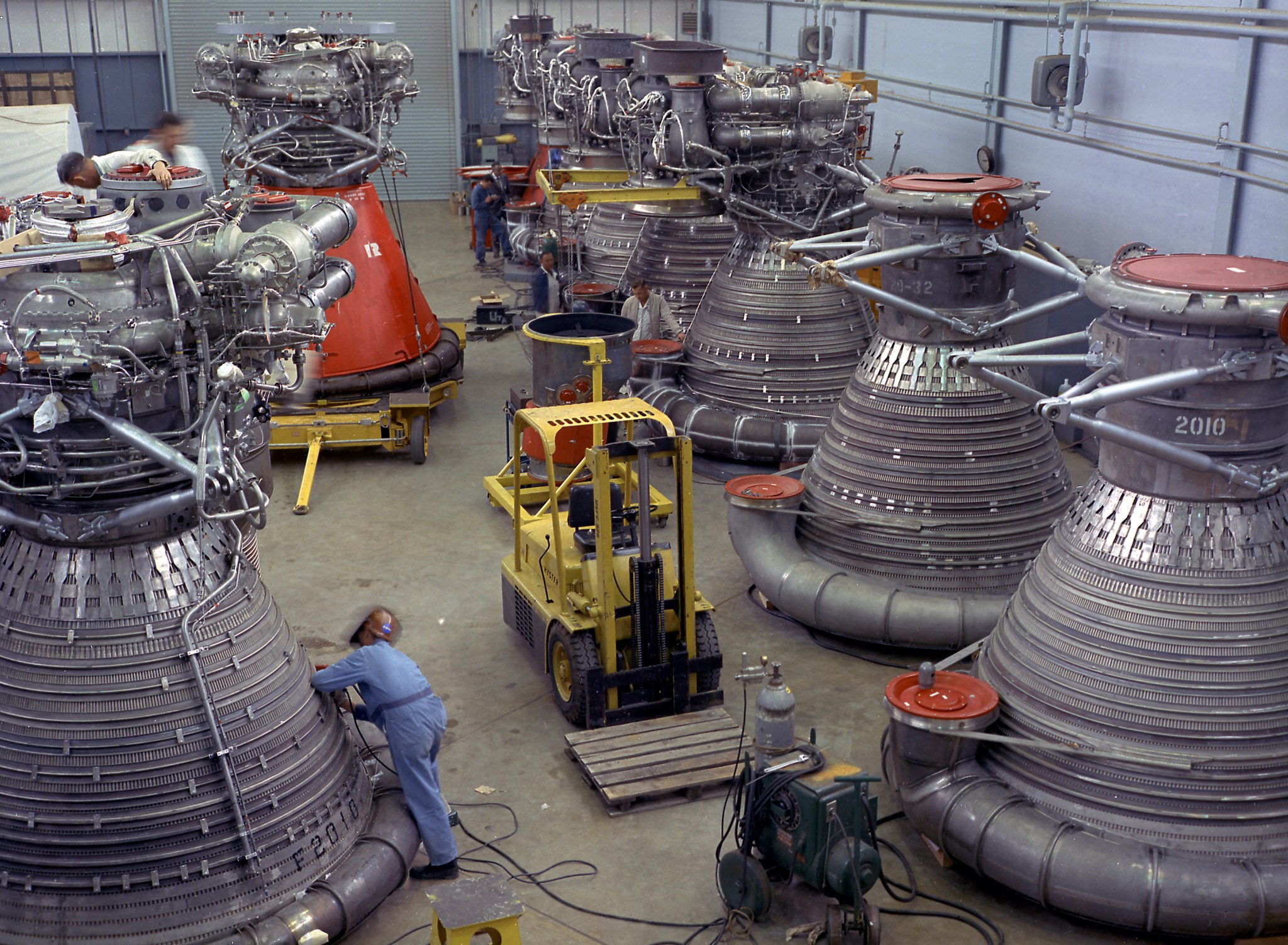
This week in 1966, NASA approved the F-1 engine contract NAS8-18734, which provided for 30 F-1 engines needed in the Apollo Program. It continued to provide production and ground support equipment through June 1970. These 30 F-1 engines, furnished by Rocketdyne Division of North American Aviation, completed the Saturn V flight requirement of 106 total engines. The F-1 engine was used in a cluster of five engines to propel the Saturn V’s first stage, the S-IC stage. Each engine produced 1.5 million pounds of thrust. Here, F-1 engines are being stored in the F-1 Engine Preparation Shop in Building 4666 at NASA’s Marshall Space Flight Center. NASA will mark the 50th anniversary of the Apollo Program from October 2018 through December 2022. The program landed a dozen astronauts on the Moon between July 1969 and December 1972, and the first U.S. crewed mission — Apollo 8 — that circumnavigated the Moon in December 1968. The NASA History Program is responsible for generating, disseminating, and preserving NASA’s remarkable history and providing a comprehensive understanding of the institutional, cultural, social, political, economic, technological and scientific aspects of NASA’s activities in aeronautics and space. For more pictures like this one and to connect to NASA’s history, visit the Marshall History Program’s webpage. (NASA)
















